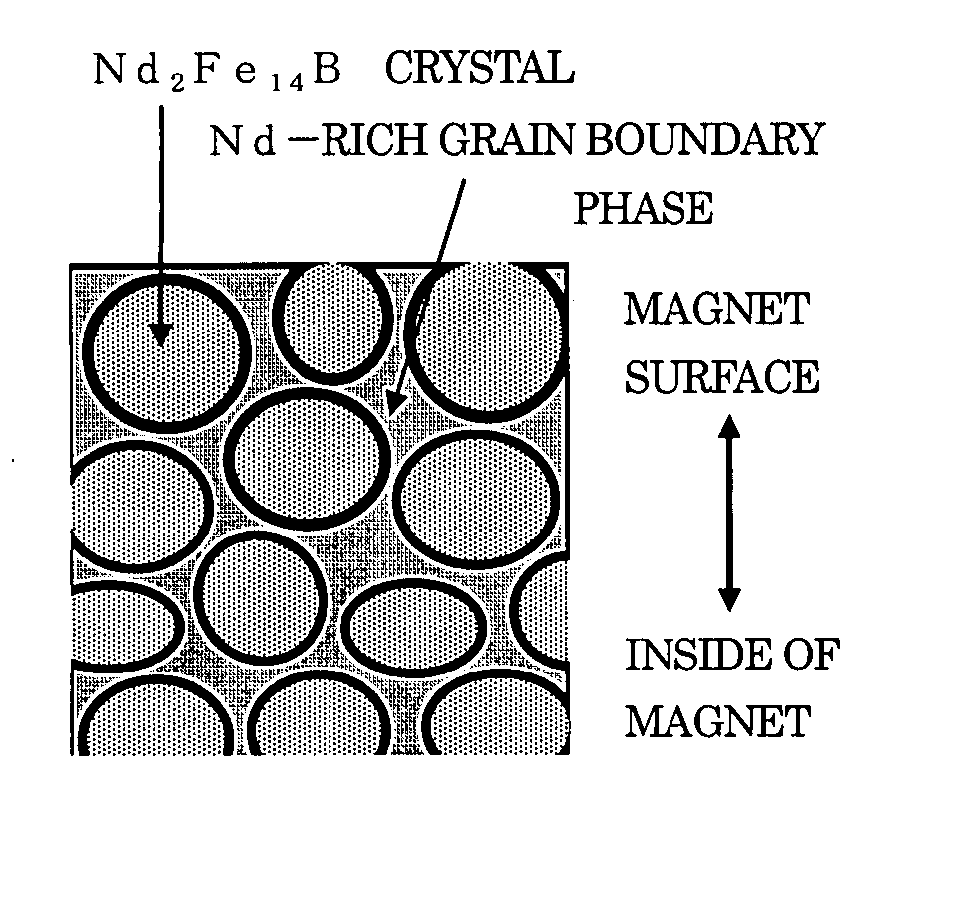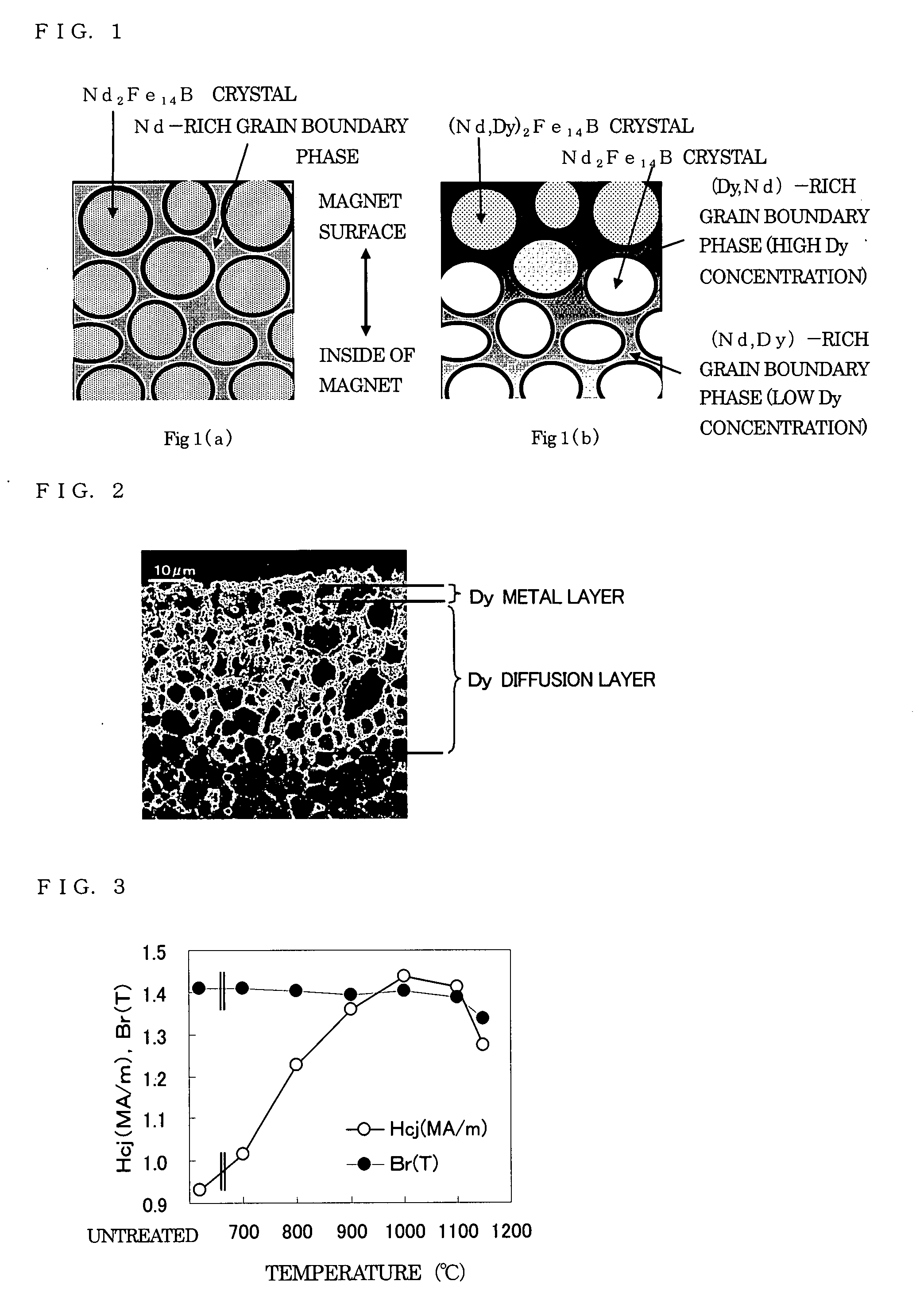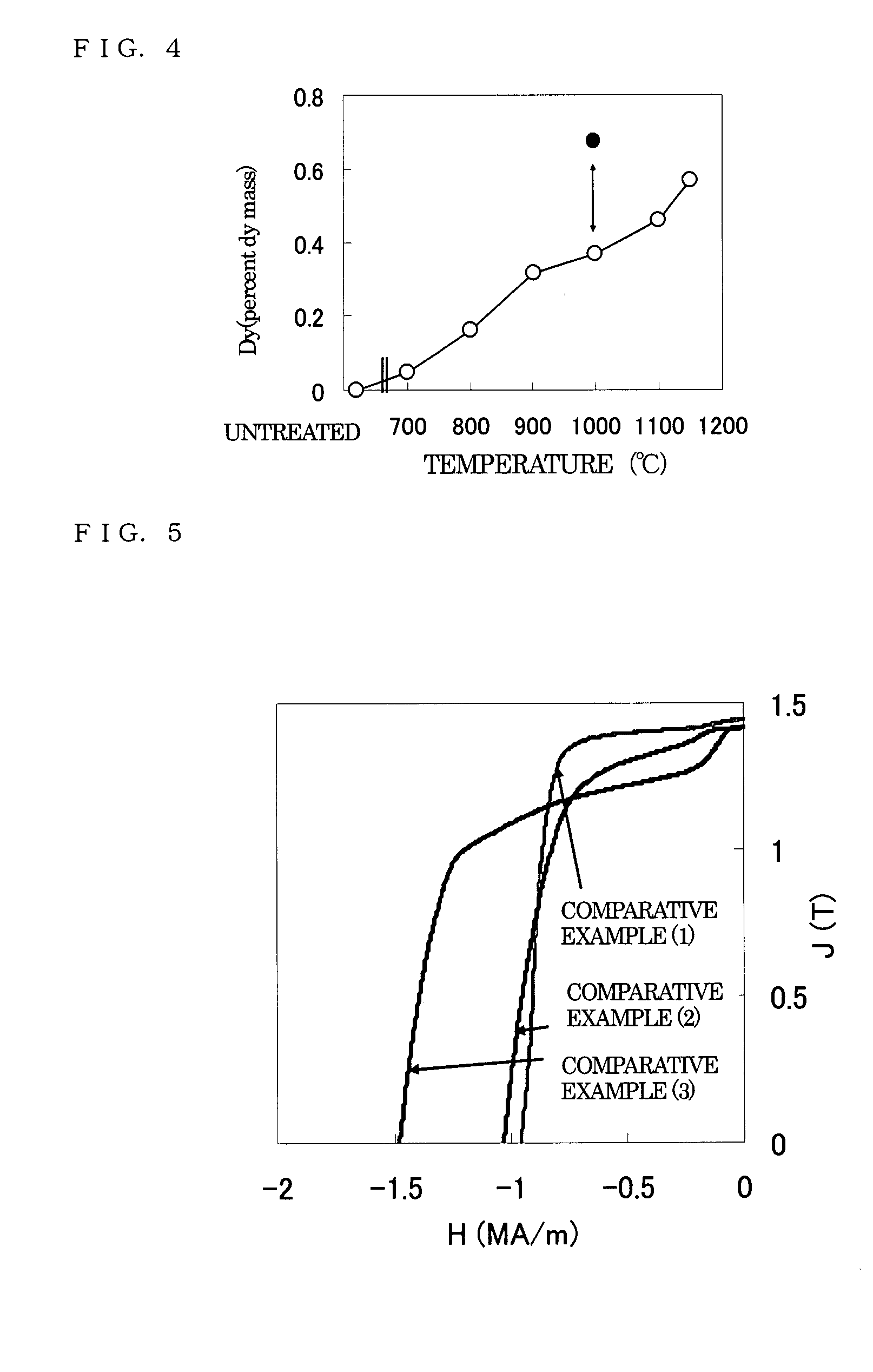Nd-Fe-B Magnetic with Modified Grain Boundary and Process for Producing the Same
a grain boundary and magnetic technology, applied in the field of high-performance magnets, can solve the problems of sharp decrease in saturation magnetization and reduced use thereof, and achieve the effect of improving demagnetization at high temperatures and increasing coercive for
- Summary
- Abstract
- Description
- Claims
- Application Information
AI Technical Summary
Benefits of technology
Problems solved by technology
Method used
Image
Examples
example 1
[0062] The present invention will be described below in detail with reference to the examples.
[0063] Alloy flakes of about 0.2 mm in thickness were prepared by strip casting method from an ingot having a composition of Nd12.5Fe79.5B8. The flakes were filled in a vessel, and were allowed to occlude hydrogen gas at 300 kPa, followed by being allowed to release the gas, so that a powder of indefinite shape having a size of 0.1 to 0.2 mm was produced. Subsequently, jet milling was conducted so as to produce a fine powder of about 3 μm. The resulting fine powder was filled in a mold, and was molded by application of a pressure of 100 MPa while a magnetic field of 800 kA / m was applied. The resulting material was put in a vacuum furnace and sintering was conducted at 1,080° C. for 1 hour. The resulting sintered material was cut to produce a plurality of tabular samples of 5 mm×5 mm×3 mm exhibiting anisotropy in the thickness direction, and one of the samples was taken as a sample of Compa...
example 2
[0070] Slurry was prepared by adding a small amount of methanol to a mixture of 1 g of Dy2O3 powder and 0.3 g of CaH2 powder, and the slurry was applied to each of the same tabular sample as that used in Example 1, followed by drying. On the other hand, slurry was similarly prepared from 1 g of Dy2O3 powder alone. The resulting slurry was similarly applied and dried. These were put in respective stainless steel crucibles, and the solid phase reduction and the diffusion and penetration were conducted by a heat treatment in an Ar gas atmosphere at 920° C. or 1,000° C. for 2 hours in each case.
[0071] A CaO powder on the surface of the magnet sample after the treatment was removed. Cleaning was conducted with pure water and alcohol, followed by drying. The former samples by using the mixed powder were taken as samples of Present inventions (7) and (8), and the latter samples by using the Dy2O3 powder alone was taken as samples of Comparative examples (2) and (3).
[0072] Table 2 shows t...
example 3
[0076] A mixture of 3 g of DyF3 powder, 0.9 g of metal Ca particles, and 5 g of LiF powder was put in a graphite crucible, the tabular magnet sample used in Example 1 was embedded in the powder. Subsequently, the crucible was set in an Ar gas atmosphere furnace. The maximum temperature in the crucible was set at 900° C. by controlling the furnace temperature, and molten-liquid phase reduction reaction and a diffusion and penetration treatment were conducted for 5 to 60 minutes, followed by cooling.
[0077] Each sample was taken out of the crucible, reaction residues on the magnet body surface was removed with a brush, a CaO powder was removed by being dissolved in dilute sulfuric acid, and furthermore, cleaning with pure water and alcohol was conducted, followed by drying. The resulting samples were numbered Present invention (9) to Present invention (14) in order of increasing treatment time, from 5 to 60 minutes, and magnetic properties were measured as in Example 1. When the amoun...
PUM
| Property | Measurement | Unit |
|---|---|---|
| Percent by volume | aaaaa | aaaaa |
| Volume | aaaaa | aaaaa |
| Volume | aaaaa | aaaaa |
Abstract
Description
Claims
Application Information
 Login to View More
Login to View More - R&D
- Intellectual Property
- Life Sciences
- Materials
- Tech Scout
- Unparalleled Data Quality
- Higher Quality Content
- 60% Fewer Hallucinations
Browse by: Latest US Patents, China's latest patents, Technical Efficacy Thesaurus, Application Domain, Technology Topic, Popular Technical Reports.
© 2025 PatSnap. All rights reserved.Legal|Privacy policy|Modern Slavery Act Transparency Statement|Sitemap|About US| Contact US: help@patsnap.com



